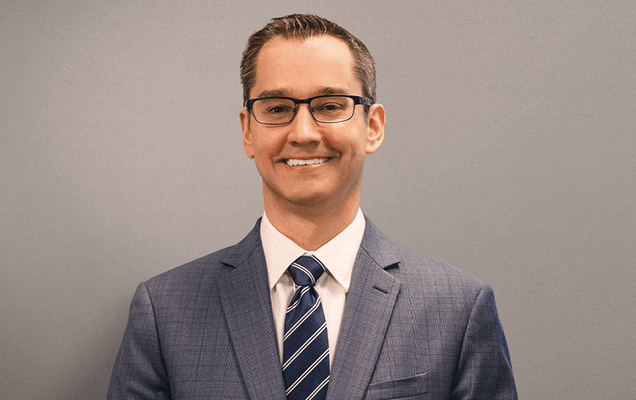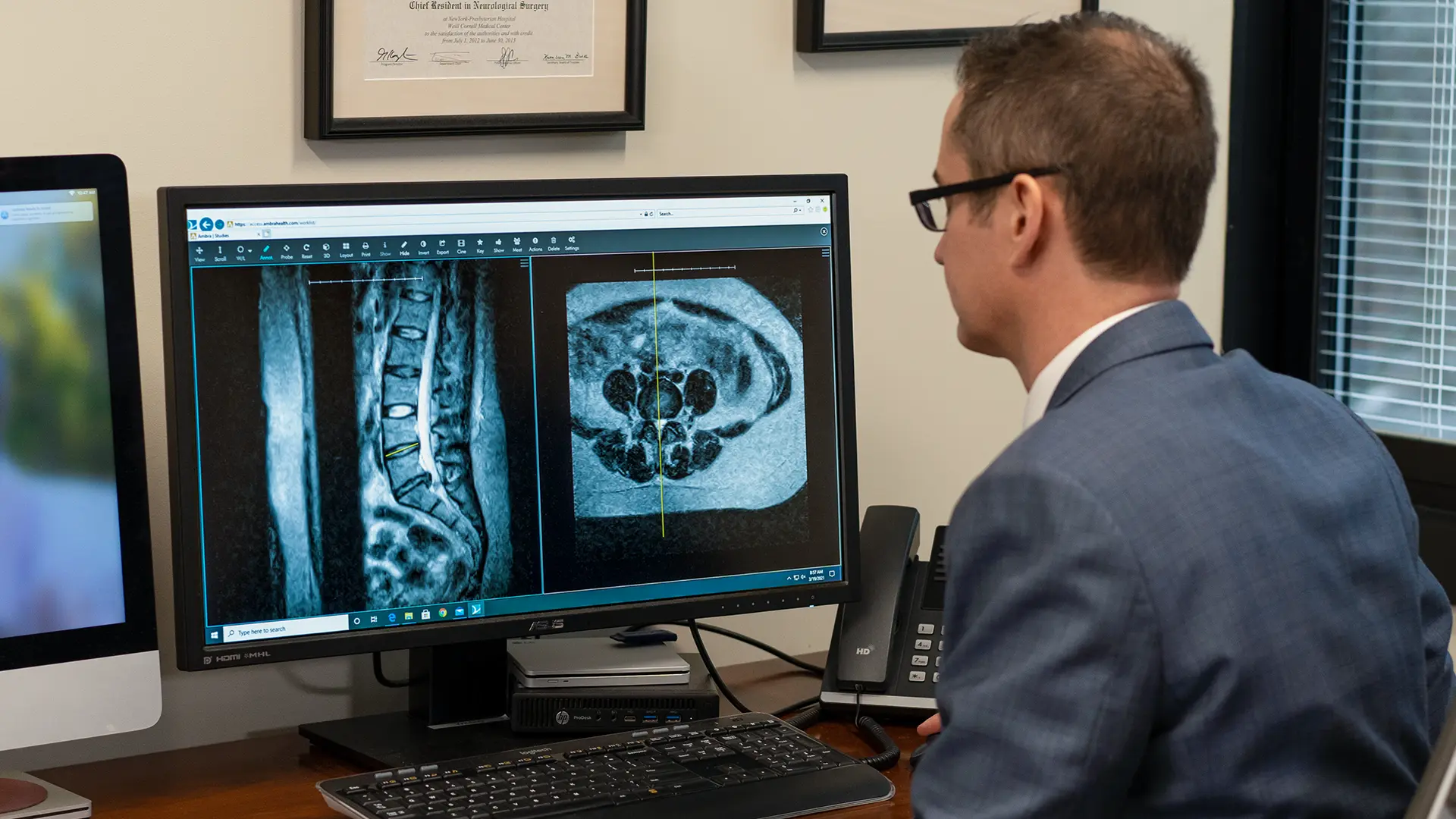If you’ve been advised to have spine surgery, it’s normal to have several questions about the procedure, your condition and what to expect. Most spine patients ask: Is back surgery safe? Back surgery is safe, and results improve as more advanced and minimally-invasive techniques are utilized.
Your Spine & Back Surgery
Your spine (also known as the spinal column) is comprised of the cervical (neck), thoracic (mid-back), and lumbar spine (low-back). Each of these levels of the spine has three major anatomical components: the bony vertebrae, intervertebral discs and the spinal cord and spinal nerves.
Vertebrae are the bones of the spine that stack together to create the length of your spine. These bones have a “channel” down the center called the spinal canal that creates a channel for your spinal cord and nerve roots to reside.
These bones stack in a column but the joints between them allow for the movement and flexibility of the spine allowing you to bend and twist. Arthritic or degenerative changes of the vertebrae and joints can lead to back pain and spinal stenosis.
Between each of these vertebrae are discs. These discs are made of a strong, fibrous outer shell and the inner portion is a rubbery, jelly-like substance. The discs act as cushions or shock-absorbers, keeping the vertebrae from rubbing together while allowing a small amount of motion at each level. A herniated disc can lead to pressure on the nerves or spinal cord causing pain or other neurological symptoms.
The third and most vital part of your spine is the neural elements.
These consist of the spinal cord and the nerve roots. The spinal cord is the “network cable” that allows your brain to communicate with your entire body and vice versa. The spinal cord exits the skull from the bottom of the brain and travels through the cervical and thoracic spine where it ends in the upper lumbar spine leaving the nerve roots below.
Cervical and thoracic spinal surgeries are inherently riskier as they can also involve the spinal cord in addition to the spinal nerves, while lumbar surgery typically only involves nerve roots. A pair of nerve roots (left and right) exit the spinal column at every spinal segment. Impingement or pressure on the nerves can lead to pain, numbness, or weakness while impingement or pressure on the spinal cord can cause significant neurological deficits.
Minimally Invasive Spine Surgery: An Overview
Is back surgery safe if minimally invasive techniques are used? Every surgical procedure carries risks, regardless of the type of surgery that is being performed. Some of the risks of surgery include difficulty healing, infections, bleeding or blood clots.
Advances in surgical techniques, paired with progressive technologies, has allowed spine surgeons to perform more delicate procedures using much less invasive techniques.
Minimally invasive surgery involves using small incisions and specialized instruments to perform the same surgeries that used to be performed through much longer, larger incision. This minimizes surgical trauma, blood loss and even overall time under anesthesia. Minimally invasive technique surgical procedures can be used to relieve pressure on nerve roots or the spinal cord and even perform spinal fusion.
It's time to get back
to doing what you love.
Common Minimally Invasive Spine Procedures
Microdiscectomy
When a disc in your spine becomes damaged (often referred to as a ruptured disc, bulging disc, slipped disc or herniated disc) it can cause symptoms due to compression of your nerves and spinal cord such as pain, weakness, numbness or in severe cases symptoms such as loss of bladder control.
A microdiscectomy removes the offending disc fragment relieving the pressure and helping resolve symptoms such as pain or numbness.
In some cases, a discectomy may be performed in conjunction with a spinal fusion.
Spinal Fusion
Certain conditions and injuries may warrant the use of a procedure called a spinal fusion. This procedure involves bridging the gap between two vertebrae, creating a solid column of bone.
Spinal fusions are used in cases where part of a vertebra is damaged and must be removed, a discectomy has been performed or for structural reasons, such as correction of scoliosis.
Laminectomy
A laminectomy is used in the case of spinal stenosis or other conditions that can cause a narrowing of the spinal canal such as bone spurs or arthritis. To relieve the pressure being placed on the spinal cord or nerve roots, the roof or “lamina” of the spinal canal is removed, allowing space for the nerves and tissues to move freely once again.
Is Back Surgery Right for You?
So, is back surgery safe? The answer is yes; if it is performed properly, the risks are minimized. One way to help minimize risks? Minimally invasive techniques.
There are a number of factors that can help determine if back surgery is the right option for you.
One major consideration is whether you’ve exhausted all applicable non-surgical options. Non-steroidal anti-inflammatory medication (NSAIDs), pain medications, injections and physical therapy are a few of the treatments that are often tried to reduce pain before surgery is recommended.
Another is your ability to withstand general anesthesia. Your doctor will order a battery of tests to determine your overall fitness for anesthesia.
Choosing to have surgery is a major decision that shouldn’t be done impulsively. Be sure to consult with your doctors and surgeons to ensure that you will have the best possible outcomes and be able to reap the benefits that minimally invasive spine surgery has to offer.

About Dr. William S. Cobb
Dr. William Cobb is an accomplished neurosurgeon in North Jersey and a proud member of Neurosurgeons of New Jersey, practicing out of their Ridgewood office conveniently located on East Ridgewood Avenue. During his Neurological Surgery residency, he became passionate about the development and treatment of brain tumors affecting the brain and spine. Dr. Cobb uses state-of-the-art technology for surgical intervention in the treatment of tumors of the brain and spine including Gamma Knife radiosurgery. He has vast experience in using modern minimally invasive surgery for the treatment of degenerative spine and intervertebral disc disease. Dr. Cobb serves as the Director of Neurosurgical Oncology at Valley Hospital. He's accepting new patients.
Recent Posts:







